Thessaloniki, a city known for its rich history, houses an array of UNESCO monuments that exhibit a unique fusion of Roman, Byzantine, and Ottoman influences. Notably, the Byzantine Baths, a relic from the late 13th century, continue to showcase the quintessential characteristics of Roman and early Ottoman baths. Further, the Church of Aghios Dimitrios, an important Christian site, signifies a profound religious connection that stretches back to 303 AD. Another marvel, Panagia Chalkeon, erected in 1028 AD, epitomises Byzantine-style architecture with its ‘cross-in-square’ design. The Church of Agios Georgios, or The Rotunda of St. George, constructed during Roman rule, is prominent for its intricate mosaic works. In contrast, the Church of Aghia Sophia blends Byzantine and early Christian art in its splendid mosaics, earning its reputation as an important Byzantine landmark. The Church of Panagia Acheiropoietos, dedicated to the Virgin Mary, provides insight into early Christian religious practices, meaning “not made by hands”, alluding to a miraculous icon inside the church. The Church of Aghia Ekaterini, another UNESCO-recognized structure, captivates with its elegant architecture, including decorative brickwork and distinctive roof design. Meanwhile, the Church of the Transfiguration of Christ, exhibiting a unique cross-in-church tetraconch style, holds intriguing wall paintings representing religious narratives. Also, the Church of Aghioi Apostoloi, established in the Palaeologan period, showcases an array of wall paintings that underline the artistic tradition of Constantinople.
Opting for car rental services in Thessaloniki presents a convenient and efficient way to explore the city’s UNESCO Monuments. Thessaloniki’s well-planned roads and clear signage ensure a seamless driving experience. A rental car provides the freedom to design personalised itineraries, prioritising the monuments and sights that hold the most interest. Thessaloniki’s vast array of car rental companies offers diverse vehicle options, from compact cars for easy city navigation to spacious family-sized vehicles catering to the varied needs of tourists. All vehicles undergo thorough safety checks, ensuring reliable performance. Additionally, these services often provide comprehensive city maps, traffic regulations information, and navigation aids to help drivers feel at ease on the roads. And after visiting the city’s historical sites, they can drive to the beautiful surrounding areas of Thessaloniki, blending cultural exploration with scenic trips. For instance, a drive to Mount Olympus, known for its stunning natural beauty and rich mythology, adds another enriching layer to the Thessaloniki experience.
Listed below find the top Thessaloniki UNESCO Monuments:
- The Byzantine Baths
- Church of Aghios Dimitrios
- Panagia Chalkeon
- Church of Agios Georgios
- Church of Aghia Sophia
- Church of Panagia Acheiropoietos
- Church of Aghia Ekaterini
- Church of the Transfiguration of Christ
- Church of Aghioi Apostoloi
- Church of Agios Panteleimon
- Church of Aghios Nikolaos Orphanos
- Church of Profitis Elias
- Church of Osios David
- Vlatadon Monastery
- The Thessaloniki Walls
- Heptapyrgion
- Tower of Trigonion
1. The Byzantine Baths
The Byzantine baths are on Theotokopoulou Street in the Upper City, Thessaloniki. It serves as a rare example of Byzantine Baths still in existence in Greece. Dating back to the late 13th century, this small structure houses all essential features of baths from the Roman or early Ottoman era, including hot rooms, a water tank, and a fire area. The bath, known as Kule Hammam or “Bath of the Citadel” during the Ottoman period, operated continuously until its closure in 1940, possibly due to World War II and the German occupation of Greece.
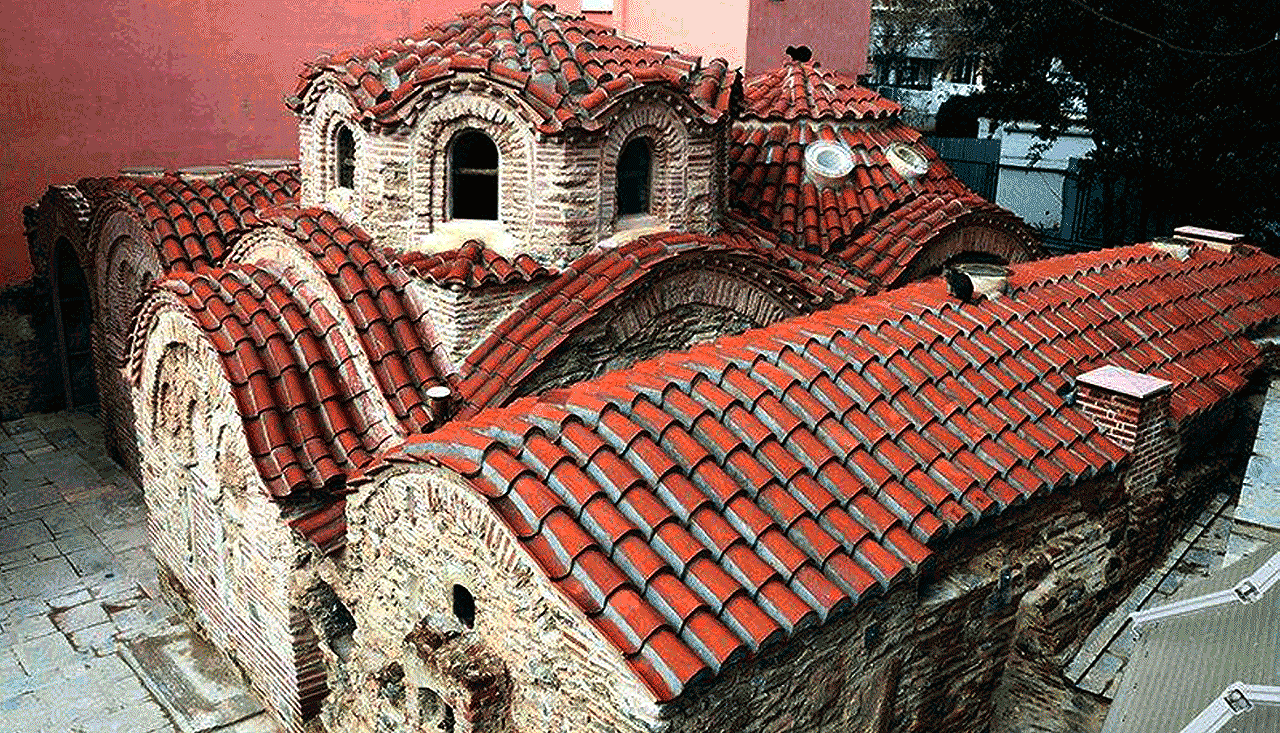
Despite several changes over time due to its lengthy usage, the bath’s original architecture mirrors the typical Roman baths. The primary entrance leads to rectangular frigidarium rooms, used as dressing rooms, followed by two vaulted tepidarium rooms and then two caldarium rooms—a cistern located north of the baths supplying water, which was warmed by a hearth below. During the Byzantine era, the bath catered to men and women alternately. However, the bath was divided into distinct male and female sections during the Ottoman period. After being closed since 1940 and suffering from neglect and earthquake damage in 1978, it underwent four years of restoration and re-opened in June 2015 as a museum and cultural space. The Byzantine Baths in Thessaloniki represent a significant piece of Byzantine domestic architecture history, the only Byzantine bath surviving in Greece. The Byzantine Baths hold a UNESCO World Heritage Site status, marking its global significance in preserving the Byzantine legacy.
2. Church of Aghios Dimitrios
The Church Aghios Dimitrios Church is a significant part of Thessaloniki’s history and holds a special place in the Christian faith. Known as an important early Christian Church and pilgrimage site, it stands over a Roman bath’s ruins, marking where Saint Dimitrios was imprisoned and died in 303 AD. The Crypt, located beneath the church, was known for producing miraculous myrrh during the late Byzantine years. This myrrh, flowing from the saint’s grave, led to his nickname, Myrovlytis. He was seen as a divine protector against attacks, drawing millions of pilgrims from around the globe who have been visiting his grave for seventeen centuries.
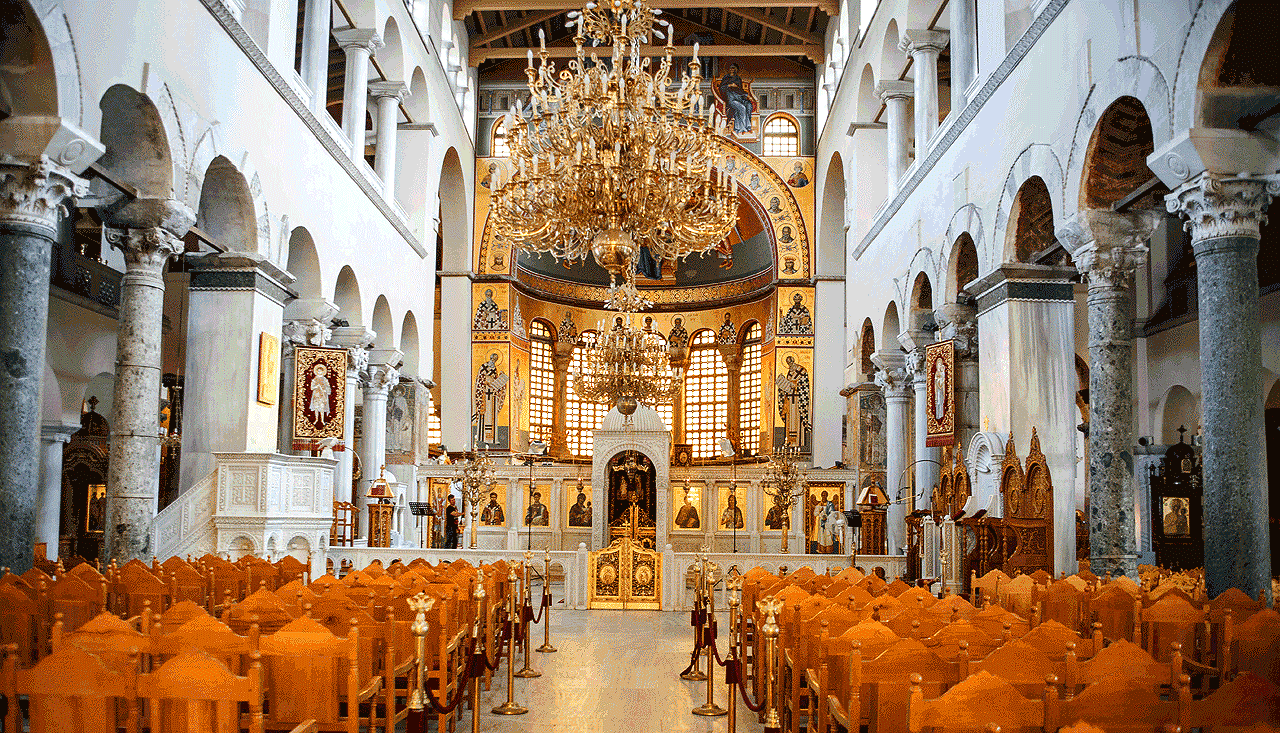
The initial Aghios Dimitrios Church was built after 313 AD but was converted into a mosque in 1493. After the city was liberated in 1912, the church reopened, but a large fire in 1917 nearly destroyed it along with much of Thessaloniki’s historic centre. Today, the church is a five-aisled basilica with a narthex and transept, filled with various paintings, mosaics, and marble decorations. The southeast corner of the church houses the chapel of Ag. Efthymiou, contributing to the church’s architectural and religious significance. The Church of Aghios Dimitrios, recognised as a UNESCO World Heritage Site, is a testament to Thessaloniki’s historical and religious contributions.
3. Panagia Chalkeon
Panagia Chalkeon is a church built in a Byzantine style called “cross-in-square” dedicated to the Virgin Mary. This church was constructed in 1028 AD during the Macedonian Dynasty of the Byzantine Empire and featured an inscribed marble lintel above the West entrance. The inscription suggests that a Byzantine official named Christoforos, possibly buried in a tomb in the North wall founded the church. The church’s name, “Chalkeon”, comes from the Greek word “chalkos”, for copper. This refers to its location, an area bustling with coppersmiths during the Byzantine era. Some suggest that its original name might have been Panagia Chalkoprateion, a name shared with a church in Constantinople. The church, mostly built with bricks, is called the “Red Church”.
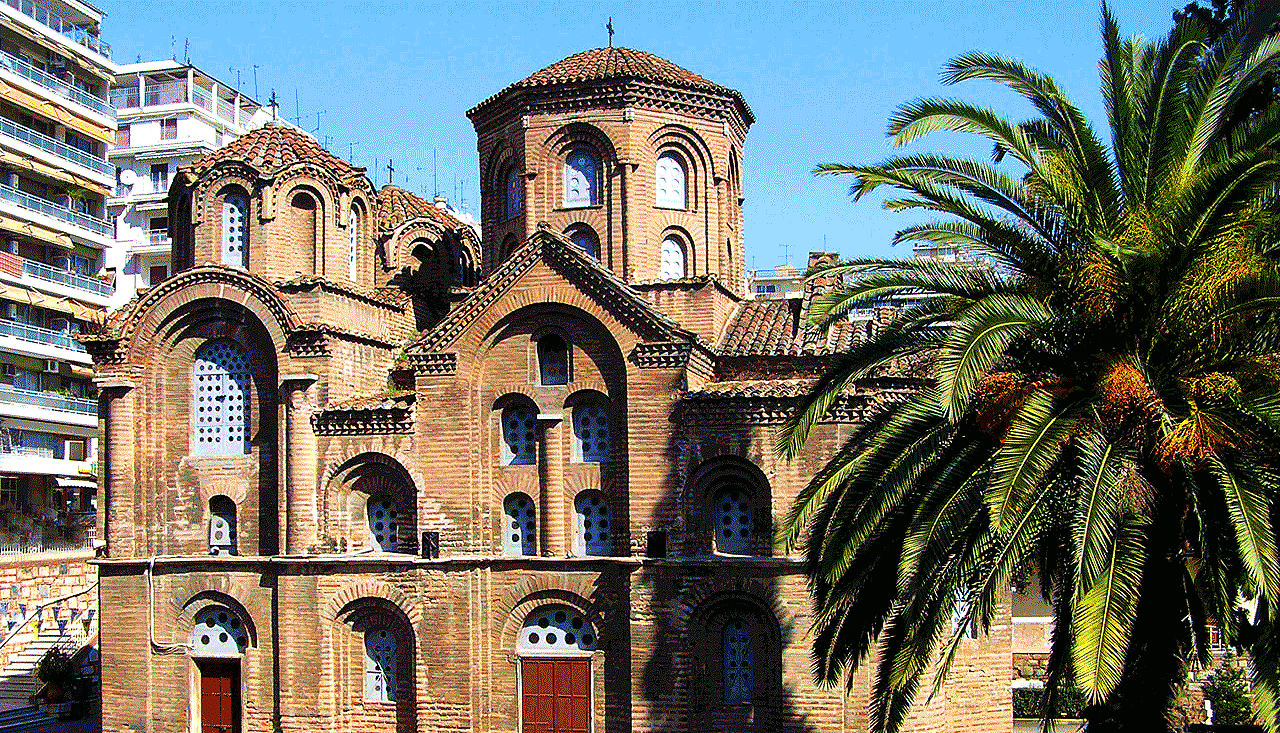
Panagia Chalkeon, one of the oldest surviving churches in Thessaloniki, offers a fascinating insight into 11th-century Byzantine architecture and history. The design and wall art of Panagia Chalkeon were influenced by Byzantine capital churches. Its external structure includes arches, brick patterns, a marble edge around the building, and three domes: a large central one and two smaller ones over the entrance hall (narthex). The wall art remains from the time the church was built, though some parts in the main body of the church were replaced in the 14th century, during the Palaeologan Era. The church transformed into a mosque, Kazancilar Camii (Coppersmith’s Mosque), in 1430 and remained there until 1912. After suffering earthquake damage, both the building and its wall art underwent restoration in the 20th century. Today, Panagia Chalkeon, listed as a UNESCO World Heritage Site, is an emblem of Thessaloniki’s rich Byzantine heritage.
4. Church of Agios Georgios (Rotunda)
Church of Agios Georgios, popularly known as The Rotunda of St. George, sits near the Arch of Galerius in Thessaloniki. Built when Caesar Galerius lived in Thessaloniki during Roman rule, it is a key part of the city’s history. Although planned as a final resting place for Galerius, it never served this purpose since his actual tomb was discovered in Romuliana, Serbia. Later, it became a Christian church under Byzantine Emperor Theodosius the Great. A rectangular part with a round ending was added to the east side as the church’s sanctuary.
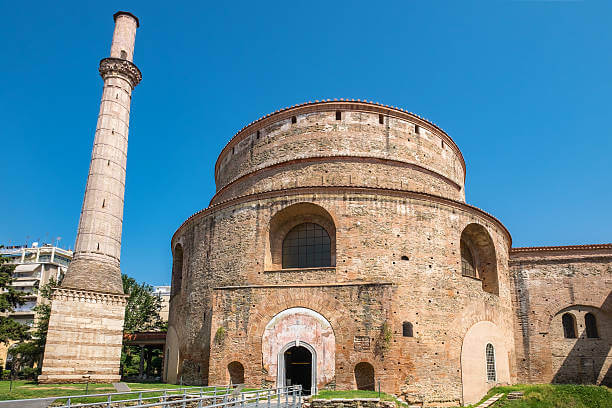
The round structure of the Rotunda is covered by a high dome which measures 24m across. The inside wall is 6.30m thick and is split into eight rectangular parts, with the southern part being the main entry. The beautiful pictures made from small, colourful tiles (mosaics) are the most striking feature of the Early Christian era. The mosaics are exceptional and considered among the best from the early Christian years. Images of saints are preserved on the lower part, in front of buildings. Different decorative themes fill the arches of the conches. A wall painting of Christ’s Ascension, from the second half of the 9th century, is in the altar’s conch. The Turks transformed it into a mosque in 1591. After Thessaloniki gained freedom in 1912, it was used again as a Christian site until 1920. The Church of Agios Georgios, although not individually listed as a UNESCO site, is part of the Paleochristian and Byzantine Monuments of Thessaloniki that are on the UNESCO list.
5. Church of Aghia Sophia
The Church of Aghia Sophia is dedicated to the Wisdom of God and is one of Thessaloniki’s oldest, largest, and most important Byzantine landmarks and history. It shares its location with the former sites of Agios Dimitrios and Panagia Acheiropoietos, once Roman baths. Builders designed the church in a “cross-in-square” style, featuring an ambulatory and a dome, a design evolution from the earlier “basilica with a dome”. Its creation goes back to the late 7th or 8th century AD, replacing a damaged Paleochristian five-aisled basilica from the 5th century.
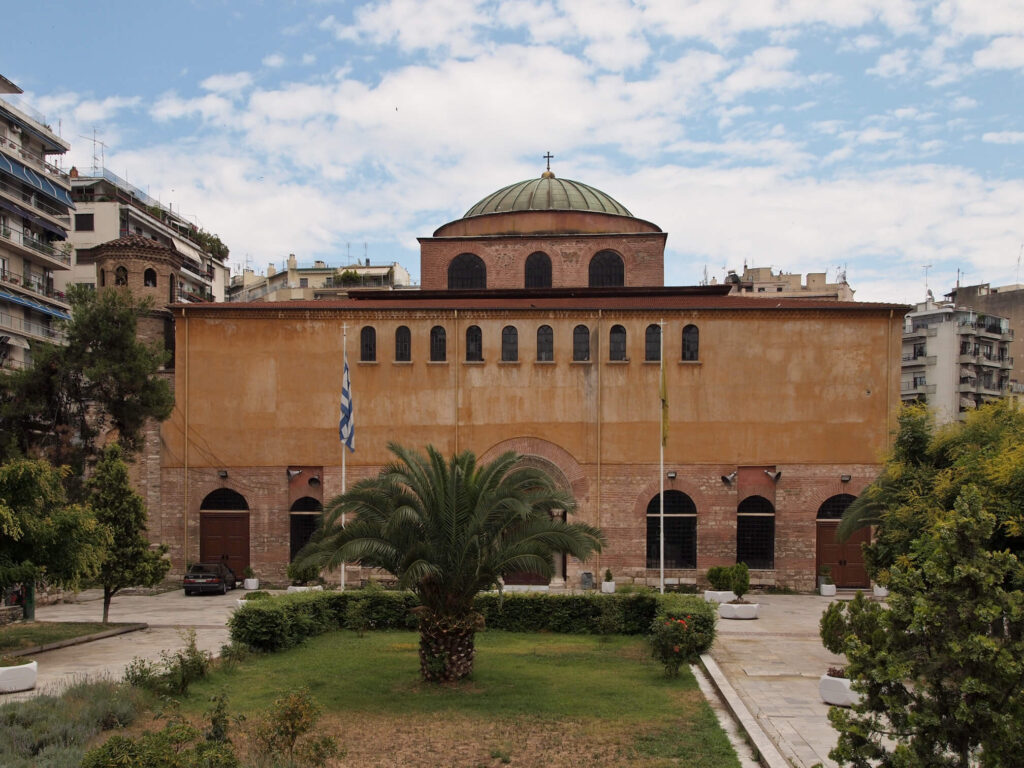
Honoured as Thessaloniki’s Cathedral, Agia Sofia held this title from the mid-13th century until the Ottomans turned it into a mosque in 1523/24. An Ottoman tower added to the northwest corner contains the stairs leading to the galleries. A minaret once stood on the southwest corner, but it didn’t survive, and an early 20th-century demolition took down a porch on the west side. The interior showcases beautiful mosaics from the 8th to 12th century, viewed as standout Byzantine art pieces. Early 8th-century mosaics depict decorative patterns due to the prevailing Iconoclasm, while later mosaics display iconic images like the Ascension of Jesus Christ and the Virgin Mary with Jesus. The Ascension mosaic decorating the dome is regarded as a masterpiece of the Macedonian Period of the Byzantine Empire. Aghia Sophia, a UNESCO World Heritage Site, carries an invaluable legacy of Byzantine architecture and religious history.
6. Church of Panagia Acheiropoietos
Panagia Acheiropoietos is a prominent early Christian church in Greece. Since its start in the mid-5th century history, this church has celebrated the Virgin Mary. Acheiropoietos, meaning “not made by hands”, appears first in a 1320 document. It refers to the Virgin Mary’s icon inside the church, believed to be a miracle, not a human creation. The church also honoured Agios Dimitrios, making it a required stop during the Byzantine period procession on the night before the saint’s feast day.
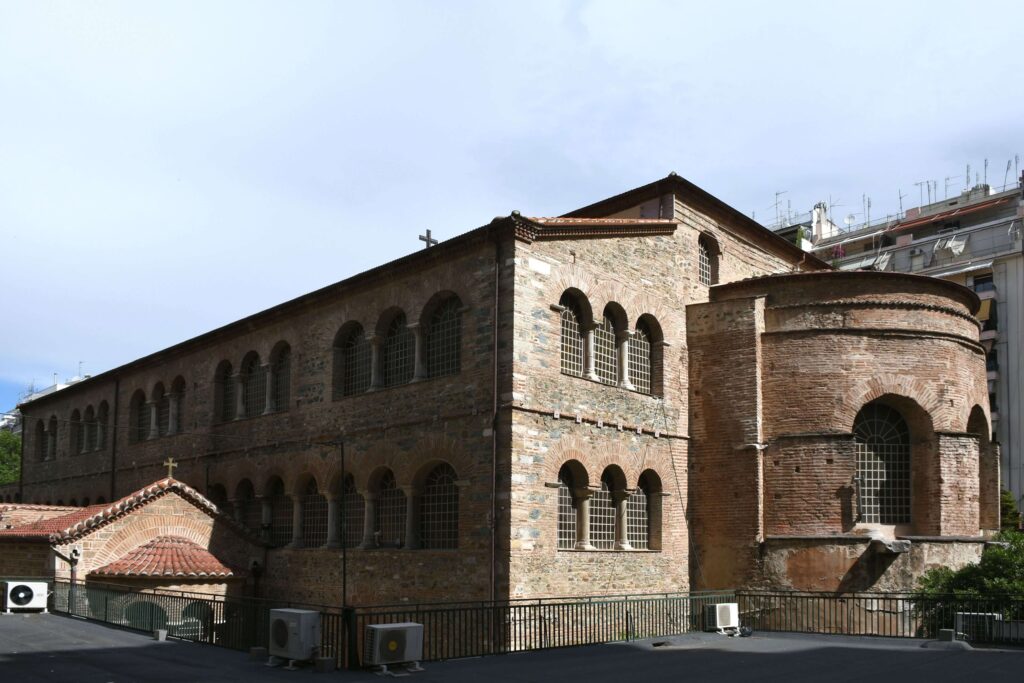
Built over a former Roman bath complex, the Acheiropoietos church showcases a three-aisled basilica design with a wooden roof and a gallery (gynaeconite). The church’s north side ends on the east at the chapel of Agia Irini from the Middle Byzantine period. The church’s rich decorations feature white marble columns and complex Corinthian capitals made from famous Proconnesus white marble, crafted in Constantinople’s workshops.
7. Church of Aghia Ekaterini
The Church of Hagia Aikaterini is close to the city walls and the Church of Profitis Ilias. It’s part of 15 ancient Christian and Byzantine structures in Thessaloniki, recognised by UNESCO in 1988. With Yakup Paşa in charge. It took the Turkish name Yakup Pasha Camii.
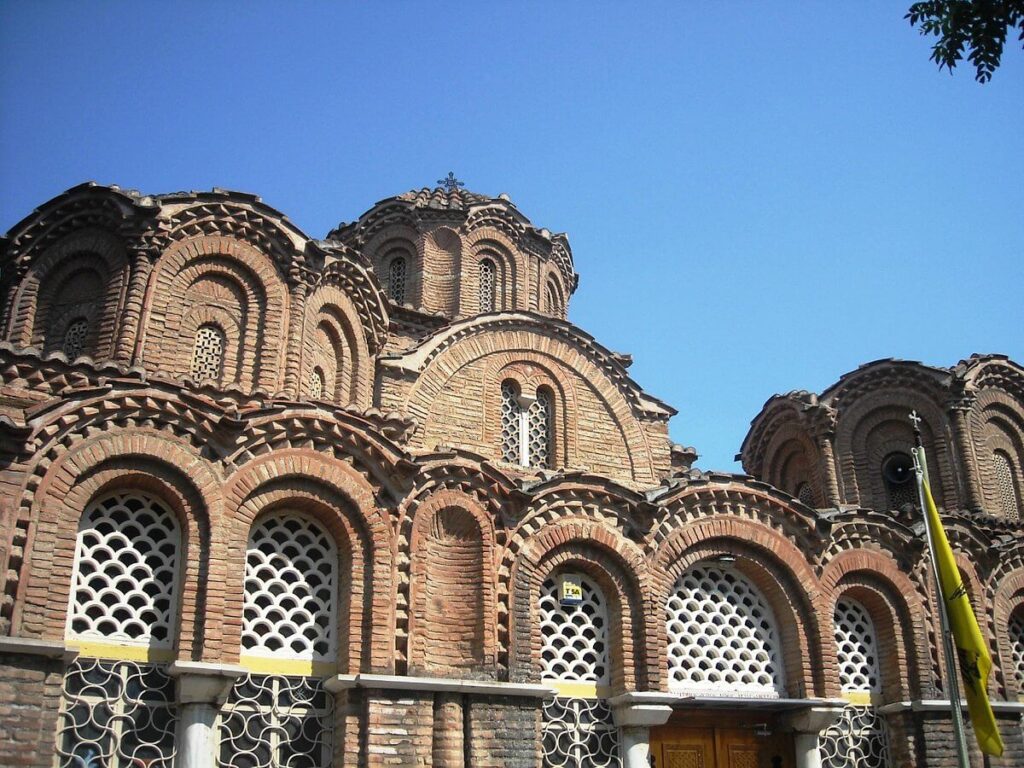
Like the Church of the Holy Apostles, Hagia Aikaterini is a cross-in-square church with a closed ambulatory that ends in two matching chapels. It lacks an exonarthex, a Church of the Holy Apostles feature. The building’s exterior features decorative brickwork, brick half-columns, and blind arcading. A marble band splits the cubic body of the church into two, creating a clear horizontal line. The church’s elegant look comes from the series of roofs that rise in height from the ambulatory to the central seven-sided dome.
8. Church of the Transfiguration of Christ
Church of the Transfiguration of Christ is situated at the crossroads of Egnatias and Palaion Patron Germanos streets. It lies close to Kamara and between the Ipapanti and Panagouda churches. Originally devoted to the Virgin Mary, this modestly-sized church was repurposed as a mosque during Turkish rule history. The building showcases a rare architectural style called cross-in-church tetraconch, where the square base houses four round recesses, topped with a large dome. Researchers identified a coin sealed within the walls, helping to date the church to the year 1350. In 1936, a lobby area, known as a narthex, was appended to the church’s western side.
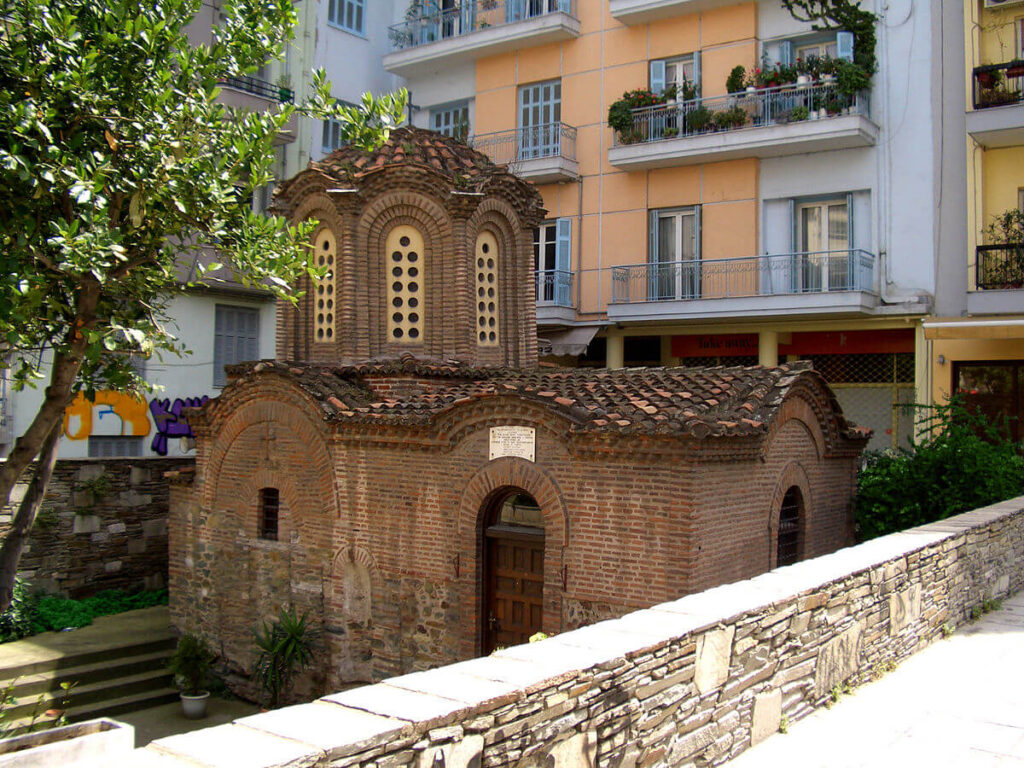
The earthquake in 1978 caused considerable damage to the structure, leading to extensive repairs. During the restorations, the original location of the altar and a small lead box for relics were found. Also, the presence of graves on the northern and southern recesses and around the church suggests it served as a memorial site. Inside the church, remarkable wall paintings adorn the dome’s interior. The artwork shows Christ’s ascent to heaven at the highest point, while the base displays a unique interpretation of the Divine Liturgy. Here, Christ is encircled by priests, deacons, singers, and believers, representing the earthly Mass performed in the church.
9. Church of Aghioi Apostoloi
The Church of Aghioi Apostoloi is a significant example of art from the Palaeologan period (1261-1453) in Thessaloniki. Like other Byzantine monuments in the city, it follows the artistic tradition of Constantinople. The name “Agioi Apostoloi” is a later addition, based on the belief that the church was adorned with twelve domes representing the Apostles. The initial dedication was to the Virgin Mary, as the vast array of subject matter in the wall paintings depicts scenes from her life.
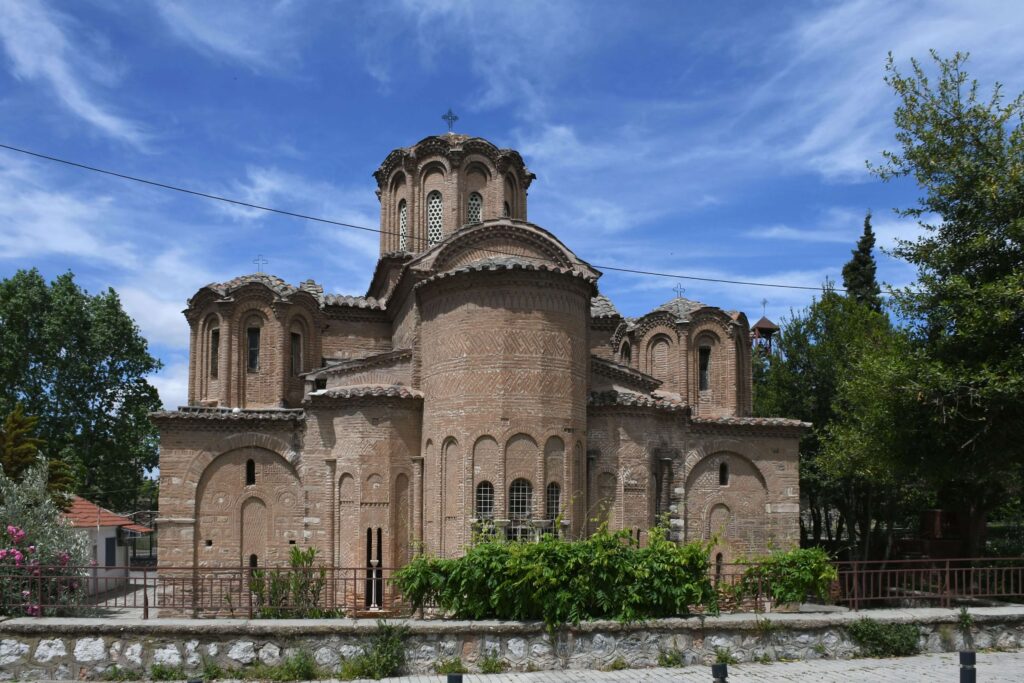
Three remaining inscriptions reveal that Ecumenical Patriarch Nifon I, using his donations, established the monument between 1310 and 1314. Despite the damage caused by the Turks during their occupation, when they removed all of the gold tessera, the mosaics from 1314 still stood out. These mosaics, which mirror the renowned ones in the Monastery of Chora in Constantinople, are exceptional examples of Palaiologan-era art history in Byzantium.
10. Church of Agios Panteleimon
The Church of Agios Panteleimon, built between the late 13th and early 14th century, reflects the architecture of the late Palaiologan Period history. This complex structure includes a dome, a narthex, an ambulatory, and two chapels to the east. Additional smaller domes embellish the narthex and the ambulatory. Historians believe this church served as the principal place of worship or “Katholikon” for a Byzantine monastery. Several Byzantine wall paintings from the same era survive within, and the main dome rests on columns and capitals borrowed from older structures.
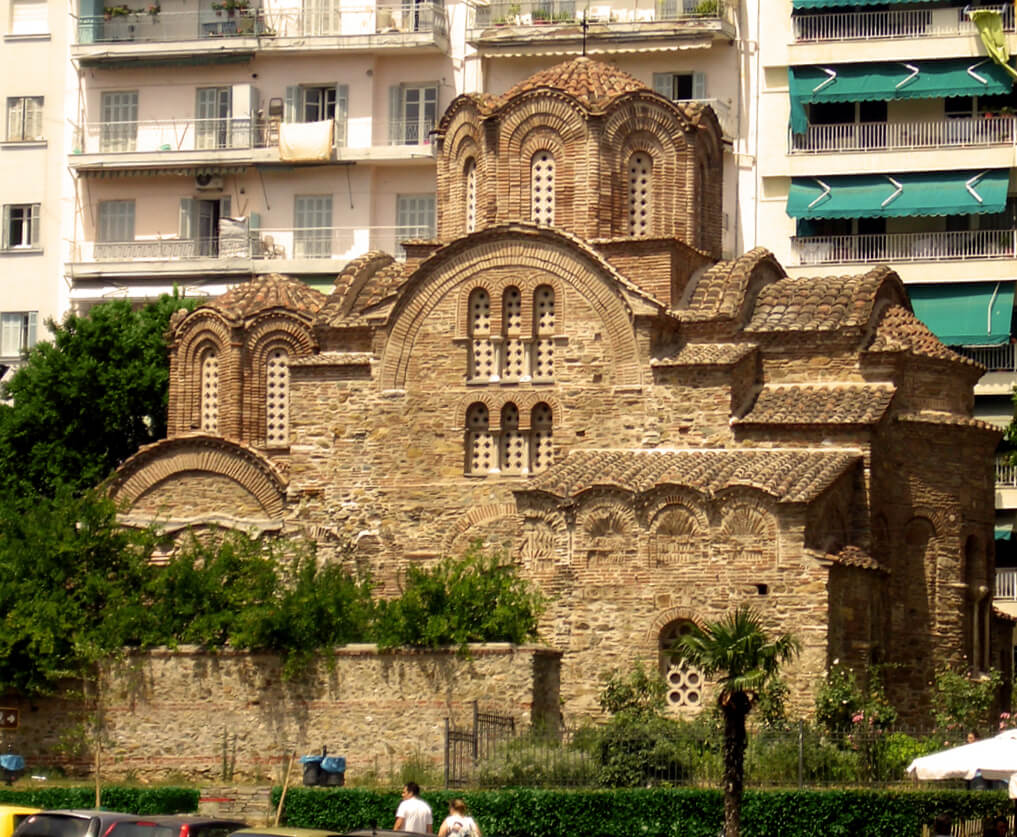
During the 16th century, the church transformed into the Mosque of Isaac, or Ishakiye Camii. It resumed its role as the Church of Agios Panteleimon after 1912 when Christian worship returned—the mosque period brought architectural alterations, such as a marble fountain in the courtyard and a now non-existent minaret. In the early 20th century, the Ottomans removed the ambulatory and its domes but left the chapels intact. Wall paintings from this era adorn the narthex.
11. Church of Aghios Nikolaos Orphanos
The Church of Aghios Nikolaos Orphanos, named “Saint Nicholas, the Orphan,” owes its origin and history to an unknown founder referred to in historical texts from the 17th and 18th centuries. Historians believe the church, with its distinct interior decoration, dates back to 1310-1320. Initial construction presented a simple, single-aisled structure with a wooden gabled roof. Over time, aisles emerged on three sides, creating an ambulatory where many graves rest. The church walls reveal a mix of brick and stone layers, with some ceramics on the eastern side and brick artwork on both the eastern and western sides. The inside of the church features a central aisle connected to others through double openings ornamented with reused late antique capitals.
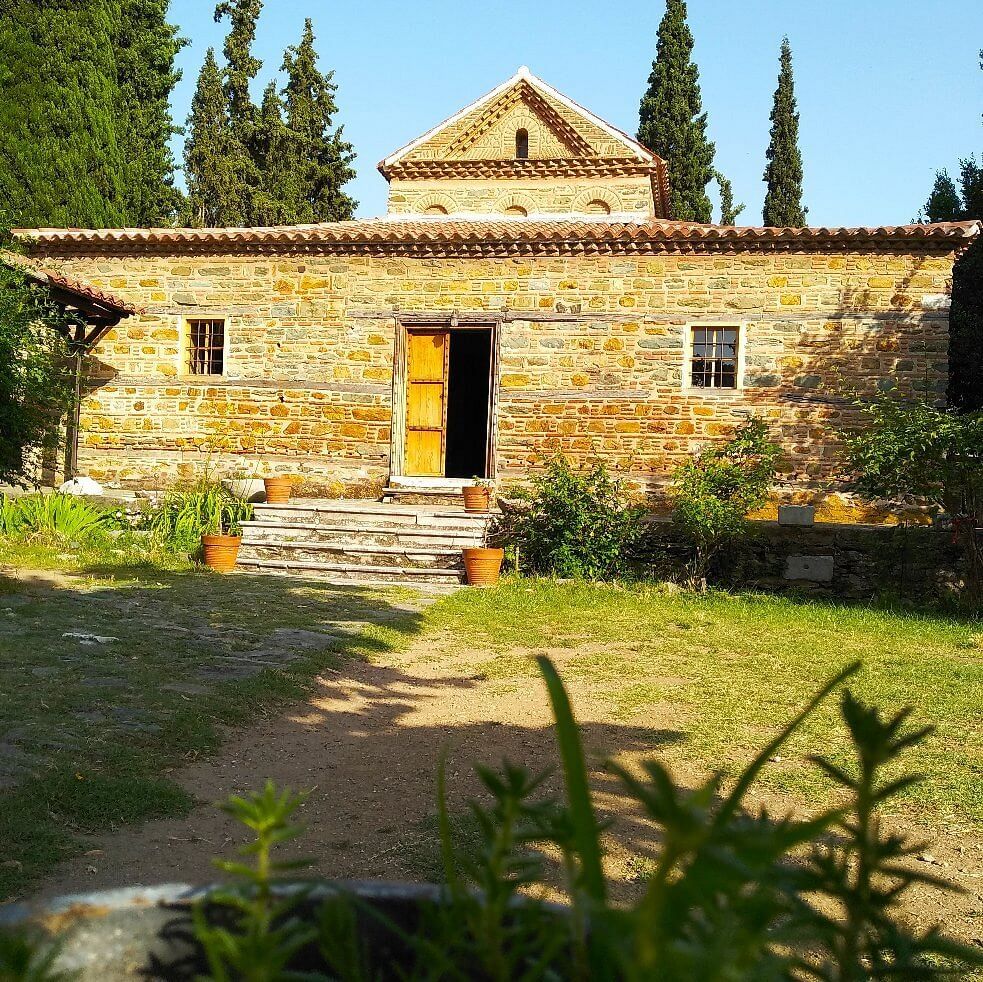
The Church of Aghios Nikolaos Orphanos stands out for its frescoes, believed to be as old as the church itself. Almost the entire interior surface of the church is covered with frescoes, representing the height of the “Palaiologan Renaissance” by the Thessalonican school. The church remained functional throughout the Ottoman period, with the frescoes uncovered during restoration work between 1957 and 1960. The Church of Aghios Nikolaos Orphanos, a UNESCO-recognized site, holds significant value for its contribution to the preservation of Palaeologan period art.
12. Church of Profitis Elias
The Church of Profitis Elias stands in the upper part of the old city of Thessaloniki, Greece. Dating back to the 14th-century Palaiologan period, its original name remains to be discovered in history. It became known as the Saraylı Mosque or Palace Mosque during Ottoman rule. The current name, Prophet Elijah, came from a misunderstood translation of this Ottoman name. Tradition suggests the church as the main worship place or “katholikon” of the Nea Moni monastery, built around 1360–1370. But new studies question this as the Nea Moni monastery kept running deep into Ottoman rule. At the same time, the Church of Prophet Elijah changed into a mosque right after Thessaloniki fell in 1430.
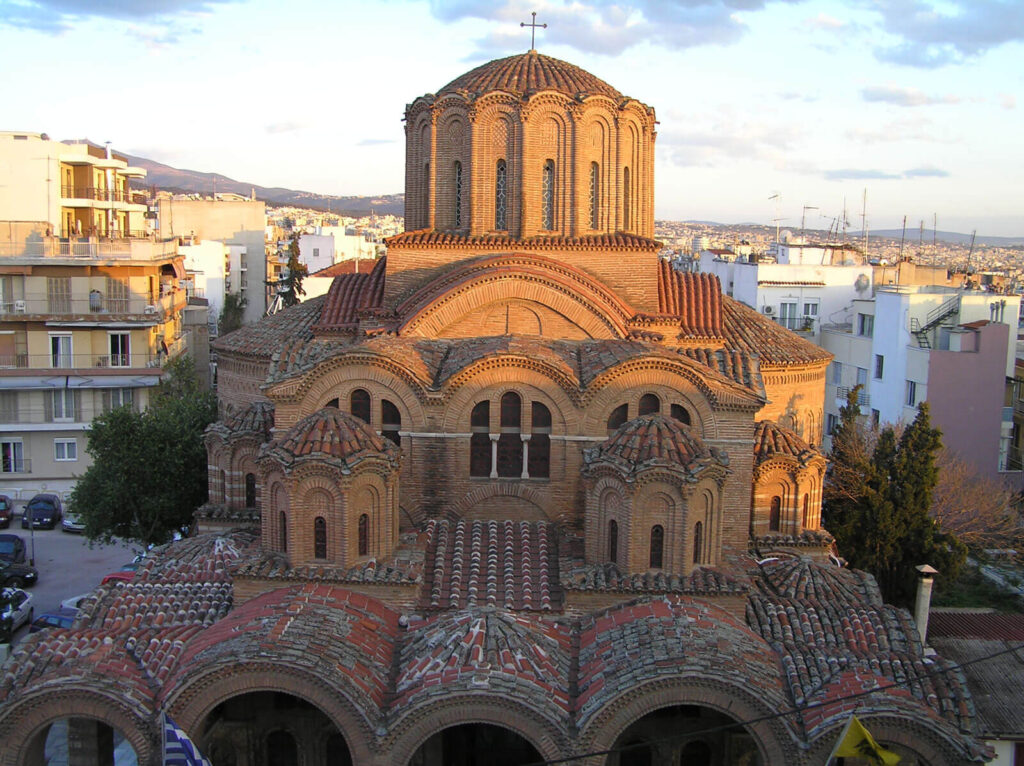
The church displays an “Athonite type” architectural style, a unique cross-in-square design only found in Thessaloniki in this church, typically seen in the monastery Katholika. The meticulous mix of bricks and white stone in the masonry’s alternating layers is uncommon in Thessaloniki and mirrors architecture from Constantinople. Some architectural features intend to create a specific mood, mainly through natural light. Some of the church’s original decorations remain as wall paintings, showing late Palaiologan art.
13. Church of Osios David (Latomou Monastery)
Church of Osios David served as the monastery’s principal place of worship. The establishment of this church dates back to the late 5th century, potentially due to Theodora, Emperor Maximianus’s daughter. After serving as a mosque during the Turkish period, it adopted a new name, Oosios David, in 1921. The initial dedication of this church was to the prophet Zacharias, but an exquisite mosaic in the sanctuary apse shifted the church’s identity to Christ, the Savior of Latomos. The uncovering of this mosaic during an earthquake in the 9th century reportedly occurred during a time of religious conflict. Despite some destruction during its transition to a mosque, likely in the 16th century, the church received a restoration with new wall paintings in the 12th century.
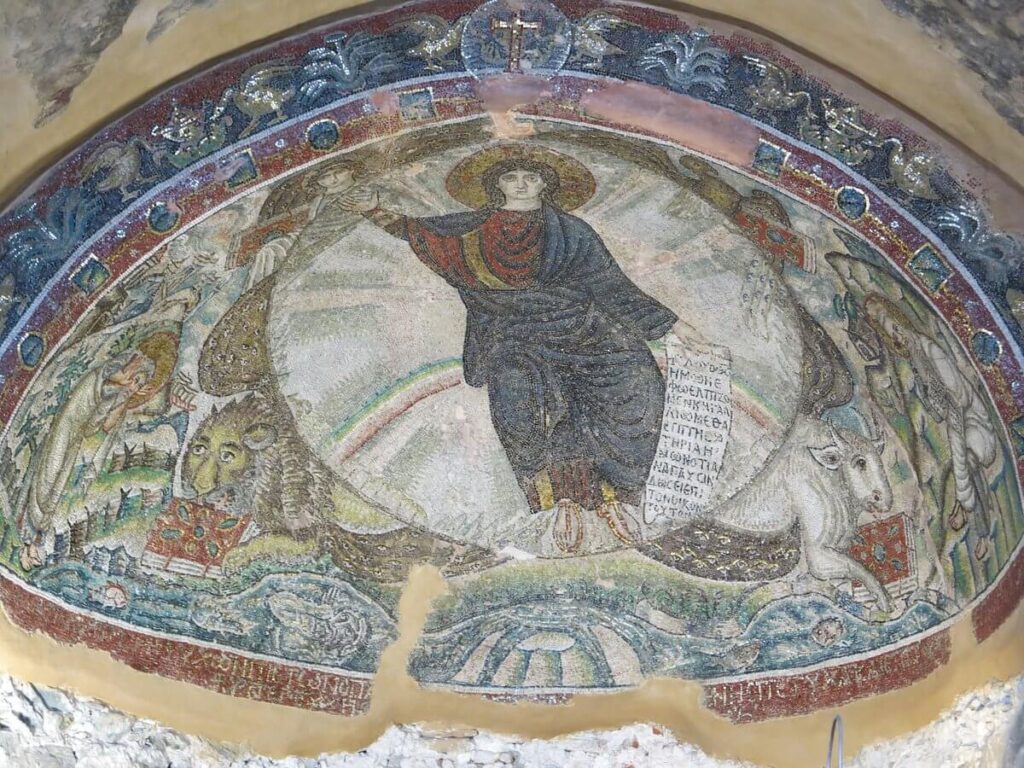
The church shows off an original design of a square plan featuring a rounded apse to the east, which holds a Greek cross within the square and creates four corner spaces. This place of worship hosts early Christian and Byzantine art. A scene of a Theophany in the rounded apse’s semi-dome, where Christ sits in the middle of a big, bright circle and is flanked by animals representing the gospel writers, serves as its main attraction.
14. Vlatadon Monastery
The Vlatadon Monastery sits in Thessaloniki’s historic district, Ano Poli. Built during the Byzantine period, it looks over the city from 130 metres above sea level. Not only is it a part of the UNESCO World Heritage list, but it also holds a special place in history, with legends stating that Apostle Paul preached here in 51 AD. The monastery displays frescoes from the 14th century and has a museum with a collection of ancient icons and a 10th-century manuscript.
The creation of the Vlatadon Monastery is attributed to Mark and Dorotheus Vlatady, followers of Saint Gregory Palamas, with the main church supposedly built in 1351 with financial help from Empress Anna Paleologina. The monastery’s original dedication was to Christ Pantocrator, but it now honours the Transfiguration of the Lord. When the Turks took control in 1387, they converted the monastery into a mosque but allowed it to operate as a monastic fund.
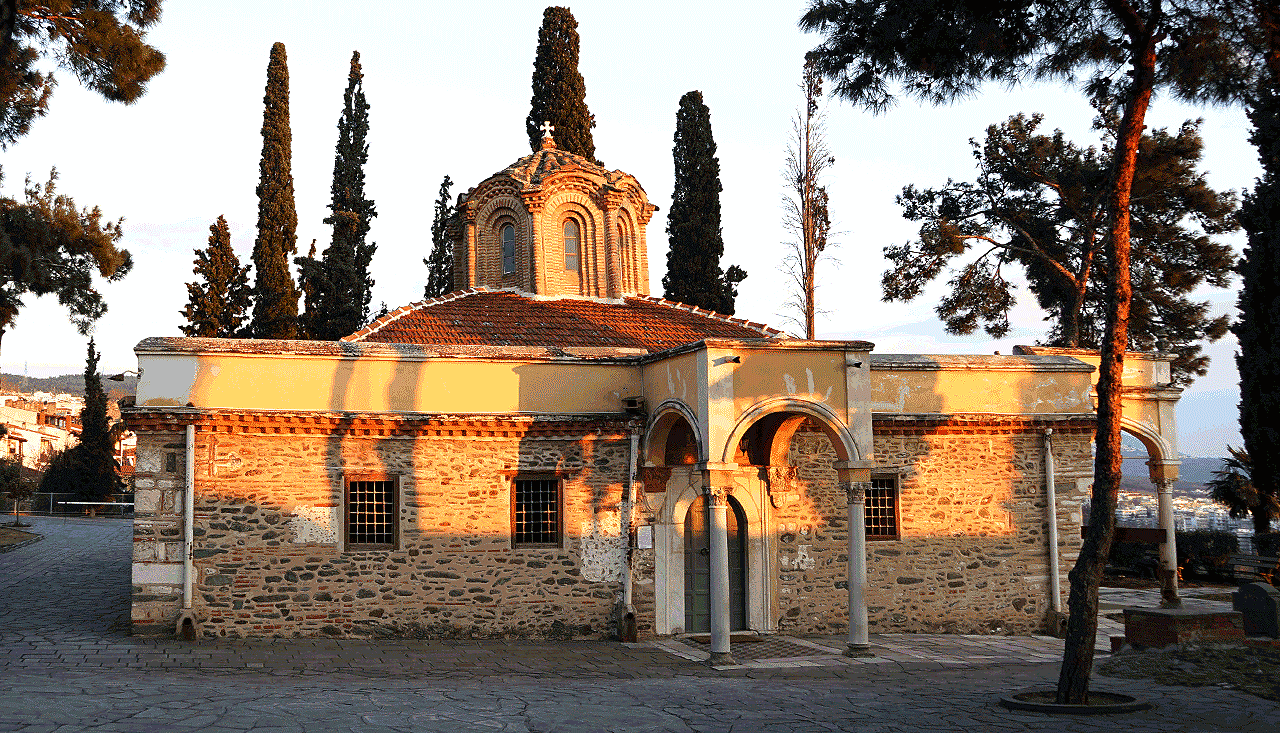
Today, it serves as an Orthodox monastery under the Ecumenical Patriarchate, housing Orthodox students from abroad who study at the University of Aristotle in Thessaloniki. It also maintains two dependencies, George the Victory-Bearer Metochion in Kalamaria and Saint Nicholas the Wonderworker Metochion in Galatista. Visitors can see a collection of icons from the 12th to 19th centuries, ancient manuscripts, and early printed books in the monastery’s museum.
15. The Thessaloniki Walls
The Thessaloniki Walls represent centuries of building work and upkeep, beginning with the city’s establishment by Cassander in 316 BC and going up to the 20th century. These walls have repeatedly protected the city from outside attacks. The key building stages happened during the 3rd, 4th, and 5th centuries AD, with the most well-preserved parts from the Byzantine period, particularly Emperor Theodosius’s era in the 4th century AD.
These ancient walls were locally called Kastra and used to encompass the whole northern side of Thessaloniki, including the Acropolis, and stretched down the eastern and western sides to the sea, forming a seaside wall. The Golden Gate was on the western side, where Dimokratias Square is now. A small octagonal tower was part of the western fortress, with some remains visible behind the courthouse. This western wall consists of marble benches and architraves from ancient city buildings.
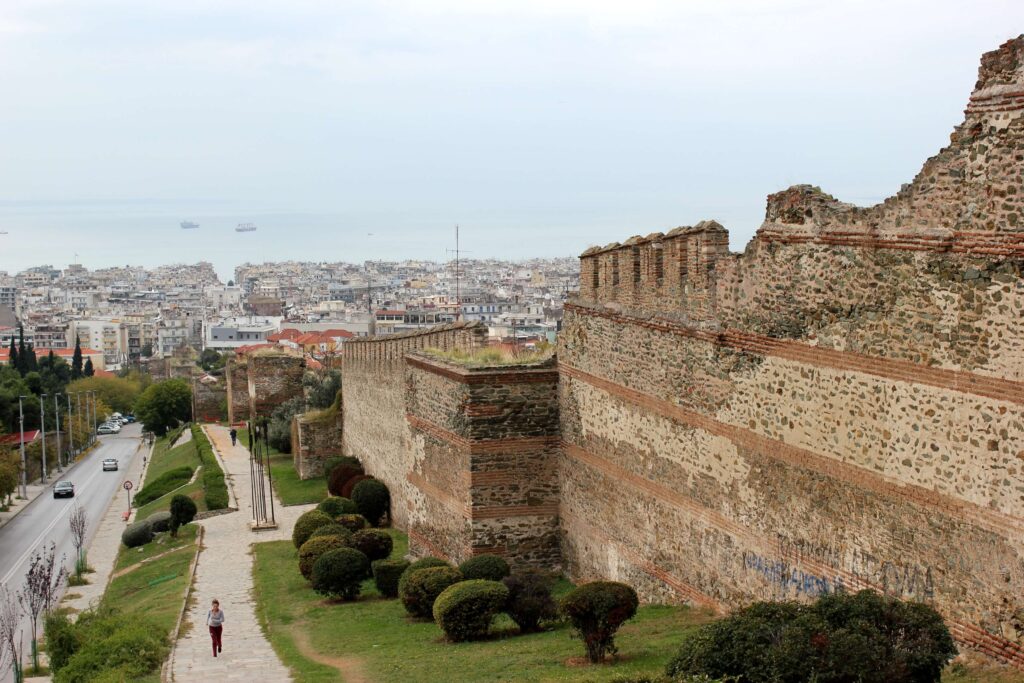
The Eastern Walls start from the Trigonio Tower at the Acropolis edge, featuring the well-preserved Gate of Anna Palaiologou. The Cassandrian Gate was further down, close to today’s Sintrivani Square, and the Coastal Gate was near the sea. The White Tower reinforced the wall fortifications. However, from 1873 to 1911, the Turks demolished parts of the sea walls to bring in sea breezes and sections of the western and eastern land walls to allow city expansion.
16. Heptapyrgion
The Heptapyrgion, also known as Yedi Kule, is a fortress in Thessaloniki, Greece. This fort on the city’s acropolis in Ano Poli has a rich history from the Byzantine and Ottoman eras. With ten towers, even though its names mean “Fortress of Seven Towers,” it was the main secure spot of the city’s acropolis. This fortress also served as the home of the garrison commander during Ottoman rule until the late 19th century. After that, the Heptapyrgion became a prison, which closed in 1989.
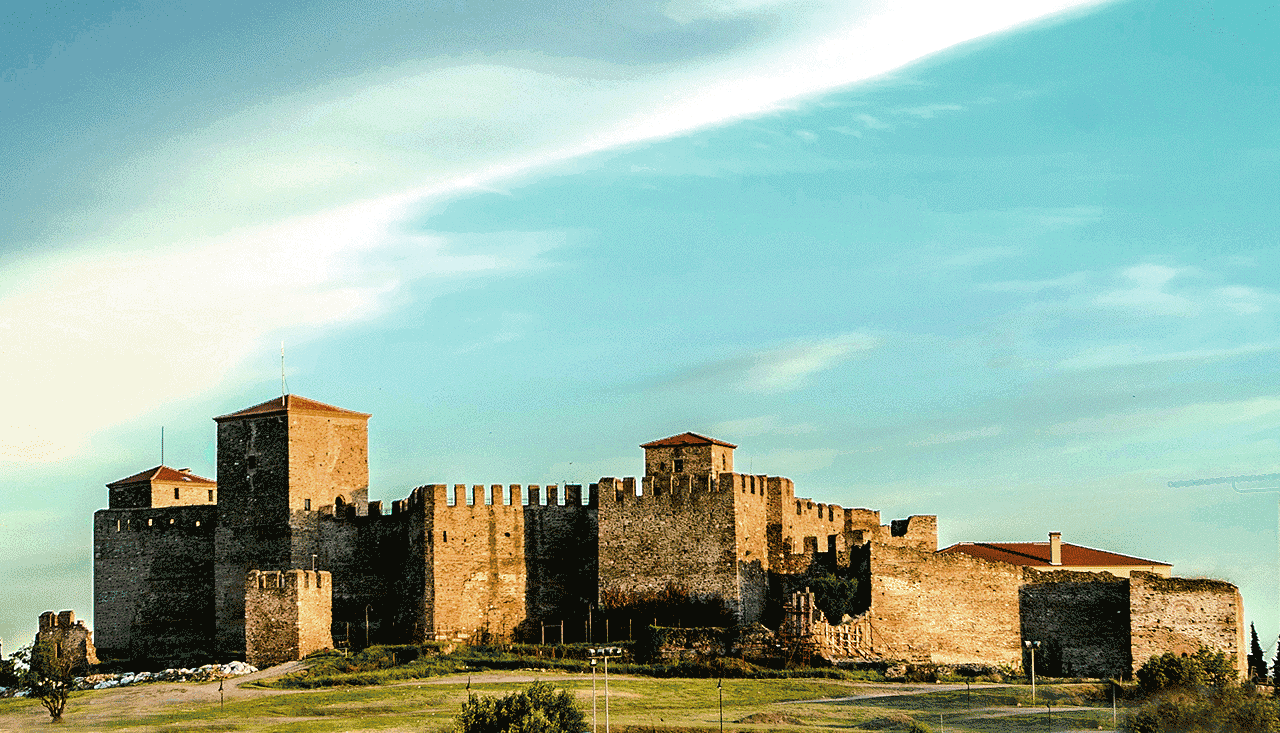
The fortress also symbolised Greece’s troubled history, holding political prisoners during the fascist dictatorship 1936, the years of Nazi occupation, the next civil war, and the military rule that began in 1967. Many prisoners faced cruel treatment, and hundreds faced execution nearby. Today, Heptapyrgion greets visitors with a chilling atmosphere. The narrow entrance leads to a guardhouse; its tall walls shut out the outside world. The locked cell doors and the dark, cold solitary confinement wing hint at the fortress’s grim past. Heptapyrgion, recognised by UNESCO, demonstrates the city’s multi-layered history, with its roles changing according to the era’s needs.
17. Tower of Trigonion (Alysseos Tower)
The Tower of Trigonion is an impressive part of Thessaloniki’s city walls and has its roots in mediaeval times. Builders put it up in the late 15th century AD and used it for storing weapons and as a watchtower. Its position on the city walls, where the most pressure fell during attacks or sieges, highlights its vital part in defending the city.
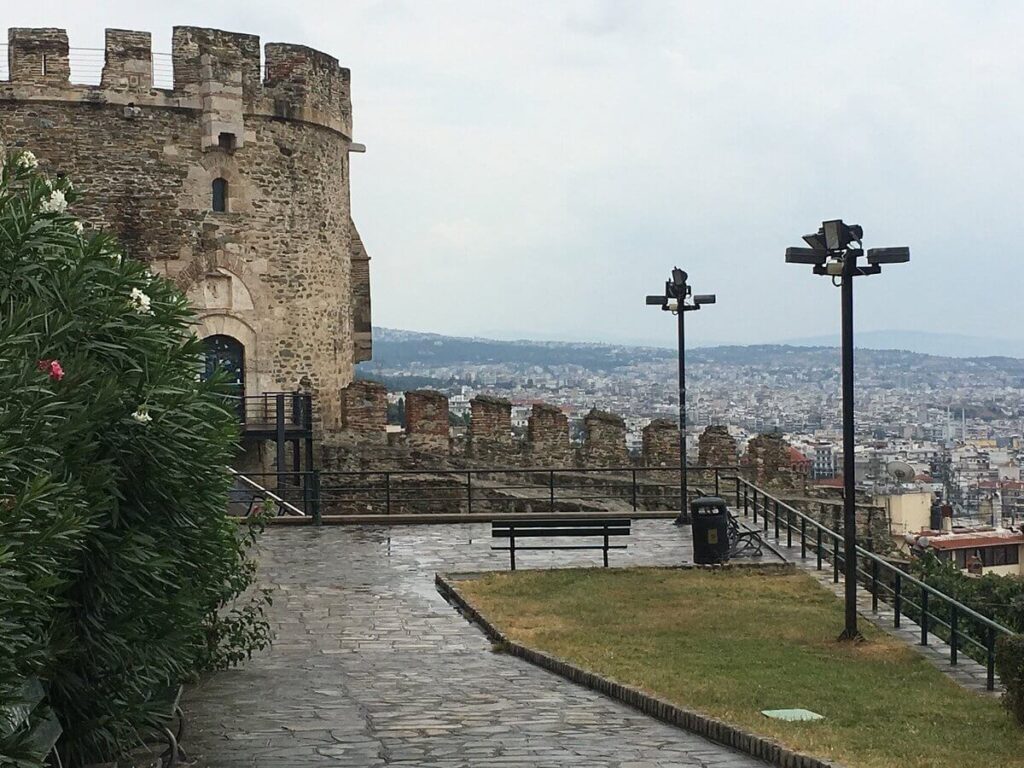
The tower’s elevation above sea level makes it a fantastic lookout point for the city’s Acropolis. During Ottoman control, people knew the tower as Zincirli Kule (Chain Tower) or Kusakli Kule (Belted Tower). Standing by this tower and the Main Gate (Portara) on the walls’ highest point lets one take in the breathtaking view of the Thermaikos Gulf. The Tower of Trigonion, forming part of the UNESCO-listed Thessaloniki Walls, speaks volumes about the defensive and strategic history of the city.
What are the historic sites and attractions in Thessaloniki?
Today, Thessaloniki attracts visitors worldwide who explore its multicultural heritage, learn about its history, and admire its captivating monuments. From historical sites to vibrant markets and scenic beaches, the city offers an exciting mix of attractions. The historic sites and attractions in Thessaloniki include The White Tower, built in the 1500s, which was initially a protective fort. Over time, it has transformed into a museum showcasing Byzantine relics, sculptures, coins, and more. Arch of Galerius and Rotunda, built in 298 AD, commemorates Galerius’s victory over the Persians. The Rotunda is one of Thessaloniki’s oldest monuments and has served multiple purposes. The Roman Forum ruins, which date back to the end of the 2nd century, were once a bustling market square. Today, it’s a popular venue for concerts and performances. Thessaloniki is also home to numerous museums, including the Archaeological Museum of Thessaloniki and the Museum of Byzantine Culture. These institutions house prehistoric sculptures, monuments, and warrior armour from the Macedonian, Byzantine, and Roman eras. These 15 Historic Sites and Attractions in Thessaloniki offer a comprehensive glimpse into the city’s fascinating history. Each site tells a unique story of the city’s past, contributing to Thessaloniki’s vibrant cultural tapestry.
What is the oldest and most important monument in Thessaloniki?
The Rotunda of Galerius is the oldest and most significant monument in Thessaloniki. With a history dating back to the 4th century, the Rotunda exhibits a round architectural design, a characteristic not commonly seen in Thessaloniki’s historic structures. Initially, the Rotunda served as a mausoleum, housing the tombs of significant figures. Over the centuries, its purpose underwent multiple transformations in line with the changing cultures and religions that swept through the region. It morphed from a tomb into a church and eventually into a mosque, each transformation leaving its unique mark on the monument. Today, the Rotunda is a revered archaeological site. Visitors from around the globe come to explore its unique architecture and learn about its rich history. The structure and the story it tells make the Rotunda an enduring symbol of Thessaloniki’s historical landscape. It’s open to the public from 8:30 am to 3:30 pm all week, with a cheap entrance fee of €1.
How to spend 3 days in Thessaloniki?
Spending three days in Thessaloniki can be a thrilling experience. Here’s a simple plan that can help any visitor make the most of this time:
- Transportation Arrangement: Opting for a car rental could enhance the experience. Among other international popular brand like Hertz, Avis and Europcar, Potos Car Rentals, a trusted name in the industry, offers a wide selection of vehicles to choose from, catering to diverse needs and budgets. This allows easy navigation through the city’s beautiful streets and helps cover maximum attractions quickly.
- Accommodation Selection: Many accommodation options in Thessaloniki, ranging from luxurious hotels to budget-friendly hostels. Depending on the preferred comfort level and budget, a suitable accommodation choice can ensure a restful stay after a long day of exploring. One must check the 14 Best Hotels in Thessaloniki and their Amenities in order to select the right accommodation .
- Restaurant Exploration: Thessaloniki takes pride in its culinary diversity. From the best restaurants in Thessaloniki, small eateries, up to the street vendors offering various delicious Greek delicacies. Visitors can enjoy traditional dishes and fresh seafood or choose modern fusion cuisine. Sampling local food adds an essential dimension to the travel experience, making it an unforgettable journey of flavours.
- Attraction Visits: The city boasts several historical landmarks, museums, and beautiful squares that should be noticed. Begin the journey with a visit to the White Tower, the city’s most famous landmark. Later, take a stroll along the Aristotelous Square, then visit the Museum of Byzantine Culture for a peek into Thessaloniki’s rich history. Start the 2nd day with the breathtaking Rotunda of Galerius. Next, visit the Archaeological Museum of Thessaloniki to marvel at its fascinating collections. Round off the day with a relaxing evening at the beautiful Ano Poli (Upper Town), offering panoramic city views. Then dedicate the final day to shopping and leisure. Visit the vibrant Modiano Market and explore Tsimiski Street, the city’s shopping hub. Finally, spend a relaxing afternoon at the Thessaloniki Concert Hall, witnessing a stunning performance to end the trip on a high note.
What is Thessaloniki best known for?
Thessaloniki is best known for its history and culture. Thessaloniki’s assortment of Byzantine-era structures earned it a spot on the UNESCO World Heritage list. Monuments like the White Tower, Rotunda of Galerius, and the Arch of Galerius narrate stories of the city’s rich past. Thessaloniki has a vibrant arts scene, hosting the International Film Festival and the International Trade Fair annually. It’s home to many museums, including the Archaeological Museum of Thessaloniki and the Museum of Byzantine Culture, which offer deep dives into Greek history and culture. Food culture thrives in Thessaloniki. Local markets bustle with a wide variety of fresh produce, and traditional tavernas serve local dishes like souvlaki, gyros, and retsina. The city also takes pride in its delicious sweets, like bougatsa and trigona panoramatos. Thessaloniki’s vibrant nightlife and music scenes draw crowds too. With its mix of traditional and modern music venues, the city offers something for every taste, from Greek folk music to the latest DJ sets. Educational institutions also shape Thessaloniki’s identity. Aristotle University, the largest university in Greece, contributes to the city’s youthful and intellectual atmosphere. Natural beauty surrounds Thessaloniki as well. The city lies near the Thermaic Gulf, providing stunning sea views and beaches, while Mount Olympus, the legendary home of the Greek gods, stands majestically in the distance.
pic – bougatsa and trigona alt
Can you rent a car to visit the monuments in Thessaloniki?
Yes, tourists can rent a car in Thessaloniki to visit the monuments. Several car rental services operate in the city, offering a range of vehicles to suit different preferences. Companies like Potos Car Rentals cater to diverse needs, from compact cars for easy city navigation to more spacious vehicles for comfortable group travel. Thessaloniki car rental provides the flexibility and convenience to explore Thessaloniki’s historic sites at one’s own pace. It allows freedom to structure the itinerary, be it a visit to the Rotunda of Galerius in the early morning or a late afternoon stop at the Thessaloniki Walls to catch the sunset. Moreover, several of the UNESCO monuments are located in or near the city centre, making them easily accessible by car. Parking facilities are typically available, either on-site or nearby. The convenience of a rental car can enhance the experience of discovering Thessaloniki’s rich history.
What are the things to consider while renting a car in Thessaloniki?
Here is a list of things you must consider while renting a car in Thessaloniki:
- Insurance. It is necessary that you have a working debit or credit card and Collision Damage Waiver insurance while renting a car to guarantee that the owner will get it back in the same condition. If you do not have either of them, then you have to pay extra money to guarantee safety. Also, any insurance does not cover the glass and mirror destruction, so if it happens, we would suggest that you call for help and stay there.
- Drivers Age. The driver must be over 21 years old and have a valid driver’s licence to drive the car. There are some companies as well whose age limit starts from 23 years.
- Driver’s Gender. Thessaloniki does not discriminate between a man and a woman. Both men and women can drive or rent a car in Thessaloniki.
- Car Type. You must look at how many people and luggage you have before renting a car. You can inform the rental service provider about it, and then they will send the car which will be suitable for all of you.
- Required Documents. The rental car provider will need your credit card details and driver’s licence under the name of the driver to avoid any unnecessary disaster. If the first driver does not have a valid driving licence, the second driver’s licence must be needed.
How much does a car rental cost in Thessaloniki?
On average, renting a standard car for a week in Thessaloniki would cost around €280. However, it’s important to note that prices can range from €154 to €595 per week, depending on factors such as the size of the car, additional features (like automatic or manual transmission), and the number of people it can accommodate. Thessaloniki Airport serves as the main pick-up and drop-off location for car rentals. Most rental packages include unlimited mileage, allowing customers to explore the region without additional charges. It’s worth mentioning that rented cars typically need to be returned with the same fuel to avoid extra fees.

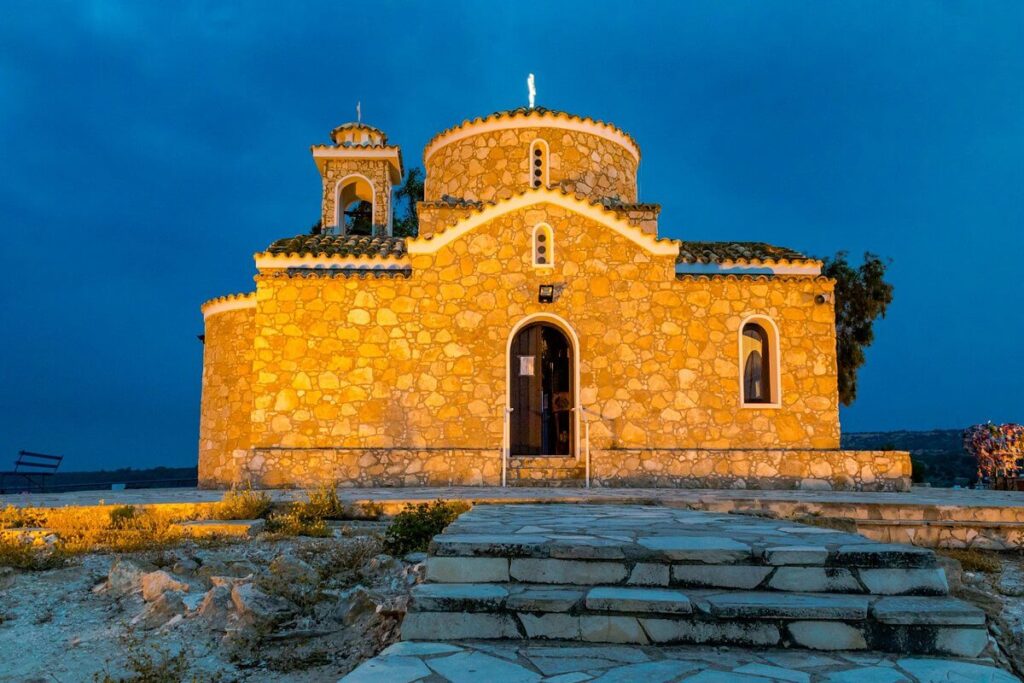
 German
German Greek
Greek Română
Română Polski
Polski


